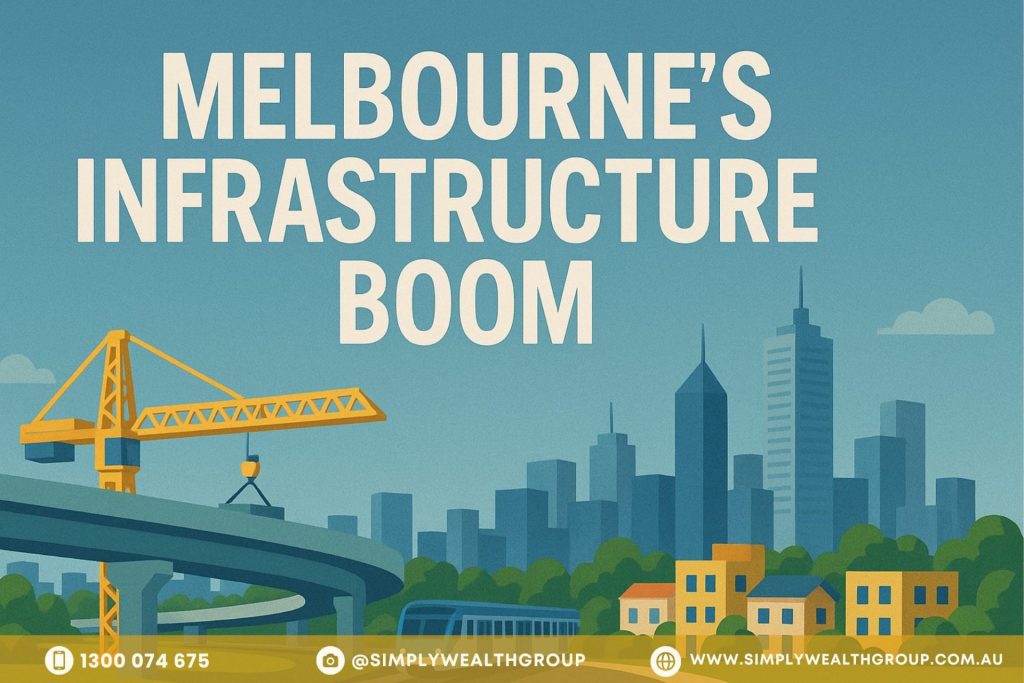
Melbourne’s Infrastructure Boom: How Transport Projects and Urban Renewal Are Driving Property Growth
Melbourne infrastructure growth is reshaping the city’s skyline, suburbs, and property market. As Australia’s fastest-growing capital, Melbourne’s investment in transport networks and urban renewal is fueling new opportunities for homeowners and investors alike. From the Metro Tunnel to the Suburban Rail Loop, these multi-billion-dollar projects are driving confidence, connectivity, and long-term property growth across the city.
From billion-dollar transport projects to vibrant urban renewal zones, infrastructure remains the backbone of Melbourne’s real estate growth story. For buyers, investors, and developers, understanding where and why these projects matter can be the key to unlocking long-term value.
1. Metro Tunnel: A New Era of Connectivity
The Metro Tunnel Project, scheduled to open in December 2025, will reshape how Melbourne moves. With five new stations—Arden, Parkville, State Library, Town Hall, and Anzac—the tunnel will separate key train lines and add much-needed network capacity.
Impact on property values:
Reduced commute times enhance liveability and push up prices near transport nodes.
Arden and Parkville, anchored by biomedical and innovation precincts, are emerging as the next high-demand zones.
Hot suburbs: North Melbourne, Parkville, Southbank, and West Melbourne.
2. West Gate Tunnel: Connecting the Inner West
Expected to open by late 2025, the West Gate Tunnel will provide a second river crossing between Yarraville and Docklands. The project aims to ease congestion, divert heavy trucks from local streets, and connect the west to the city more efficiently.
Why investors care:
Improved connectivity boosts owner-occupier demand in areas such as Footscray, Yarraville, and Altona North, transforming previously overlooked suburbs into lifestyle hubs.
3. North East Link: Melbourne’s Missing Ring
The North East Link, opening by 2028, will complete Melbourne’s orbital freeway network—linking the Eastern Freeway to the M80 Ring Road.
Property insights:
Enhanced access attracts new commercial and logistics investments.
Suburbs like Bulleen, Heidelberg, and Doncaster are tipped for steady price growth as travel times drop and employment expands in the corridor.
4. Suburban Rail Loop (SRL): The Game-Changer
Slated to start running by 2035, the Suburban Rail Loop East will connect Cheltenham to Box Hill via Monash University and Deakin University—without passing through the CBD.
Why it matters:
This project redefines accessibility, linking major education and employment hubs. Expect strong rental yields and value uplift in suburbs like Clayton, Burwood, and Box Hill as demand for medium-density living surges.
5. Level Crossing Removals: Safety Meets Amenity
Melbourne is removing 110 level crossings by 2030, replacing outdated rail intersections with modern, elevated designs and new open spaces.
Value drivers:
Improved traffic flow and safety boost local buyer confidence.
Projects in Preston and Bentleigh have already delivered parks and bike trails that enhance community appeal.
6. Urban Renewal: Melbourne’s Next Property Frontiers
Fishermans Bend
Set to house 80,000 residents and 80,000 jobs by 2050, Fishermans Bend is Australia’s largest inner-city renewal precinct. With innovation hubs and improved transport, it’s positioned as a long-term investment hotspot.
Arden
Around the new Metro Tunnel station, Arden will accommodate 15,000 residents and 34,000 jobs. Early government-led land releases are creating prime opportunities for build-to-rent and mixed-use projects.
Dandenong
The Revitalising Central Dandenong Project targets over $1 billion in private investment. Enhanced retail, transport, and housing developments are reviving the south-east and attracting new homebuyers.
What It Means for Investors
Follow the transport map. Suburbs near major projects consistently outperform the wider market.
Look for early-mover advantage. Value growth begins long before project completion.
Target employment and education hubs. Areas near hospitals, universities, and innovation precincts drive strong tenant demand.
Long-term focus pays off. Infrastructure-led growth compounds over multiple property cycles.
The Bottom Line
Melbourne’s infrastructure boom isn’t just about trains, tunnels, and cranes—it’s about confidence, connectivity, and community transformation. With projects like the Metro Tunnel, Suburban Rail Loop, and Fishermans Bend redevelopment, the city is laying the groundwork for sustained property growth well into the 2030s.
For investors and first-home buyers alike, one rule stands out: follow the infrastructure—because where transport goes, value grows.







